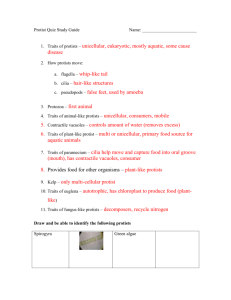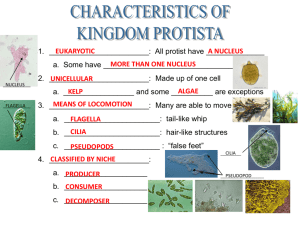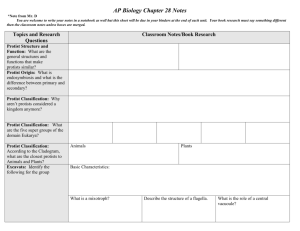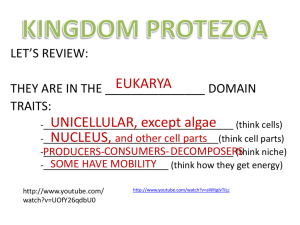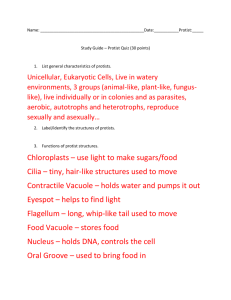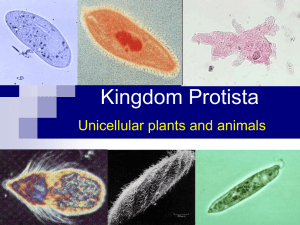Protists
advertisement
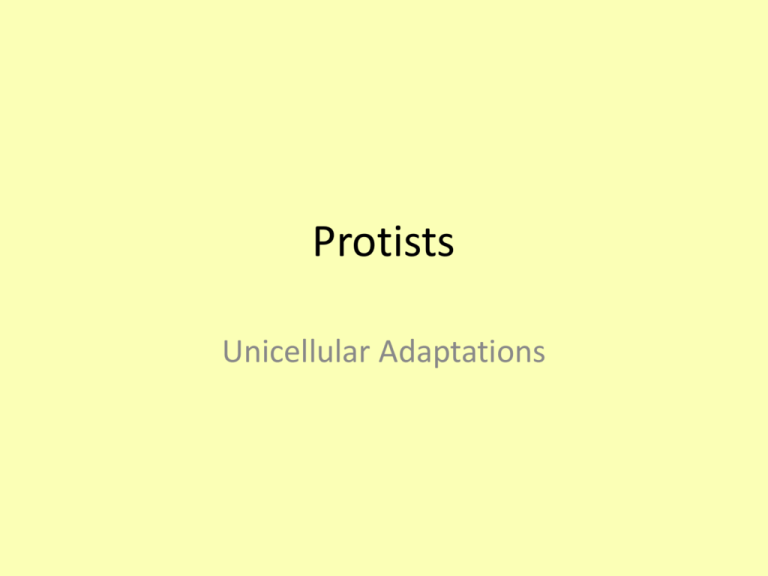
Protists Unicellular Adaptations Protists • Eukaryotic – Membrane bound organelles; nucleus • Live in water • Most are unicellular – Some are multicelluar (ex. algae) • Autotrophic (make own food) • Heterotrophic (cannot make own food) Protists • All reproduce asexually – Mitosis or binary fission • Some reproduce sexually – conjugation Protists • Unicellular adaptations – For better survival Unicellular Adaptations • Contractile Vacuole • Help maintain homeostasis – Hold and expel fluid (like a sponge) Unicellular Adaptations • Cilia – Hair-like projections – used for movement and finding food • Flagella – Whip-like tail – Used for movement Unicellular Adaptations • Pseudopods – “false-foot” – Extension of cytoplasm – Used for movement and eating food Unicellular Adaptations • Eyespot – Light sensitive pigmented spot – Detects light Eyespots can also be found in flatworms Protists • Can be: 1. Animal-like 2. Plant-like 3. Fungus-like Animal-like Protists • Protozoa – Absorb and gather/capture food • Using flagella • Ex. protozoa that causes African sleeping sickness Animal-like Protist • Sarcodines – Use pseudopods to move and capture prey • Ex. amoeba Animal-like Protist • Ciliates – Move/eat by cilia – Have oral groove and anal pore • Ex. paramecium Animal-like Protist • Sporozoans – Parasitic; reproduce by spores • Ex. Plasmodium (malaria) Plant-like Protist • Algae – Contains chlorophyll – Photosynthetic • Ex. Euglena – can make and consume food Plant-like Protist • Diatoms – Various shapes, cell walls of silicon – Used in toothpaste and face wash – Used in forensics (drowned victims) Plant-like Protist • Dinoflagellates – Have flagella • Ex. one type causes red tide Plant-like Protist • Multicellular algae – Green, brown, red Fungus-like Protist • Fungus-like – Cell walls, absorb nutrients, reproduce by spores • Ex. Slime molds Fungus-like Protist • Water molds – Ex. Phytophthora infestans – Cause of Irish potato famine (1849-1852)

